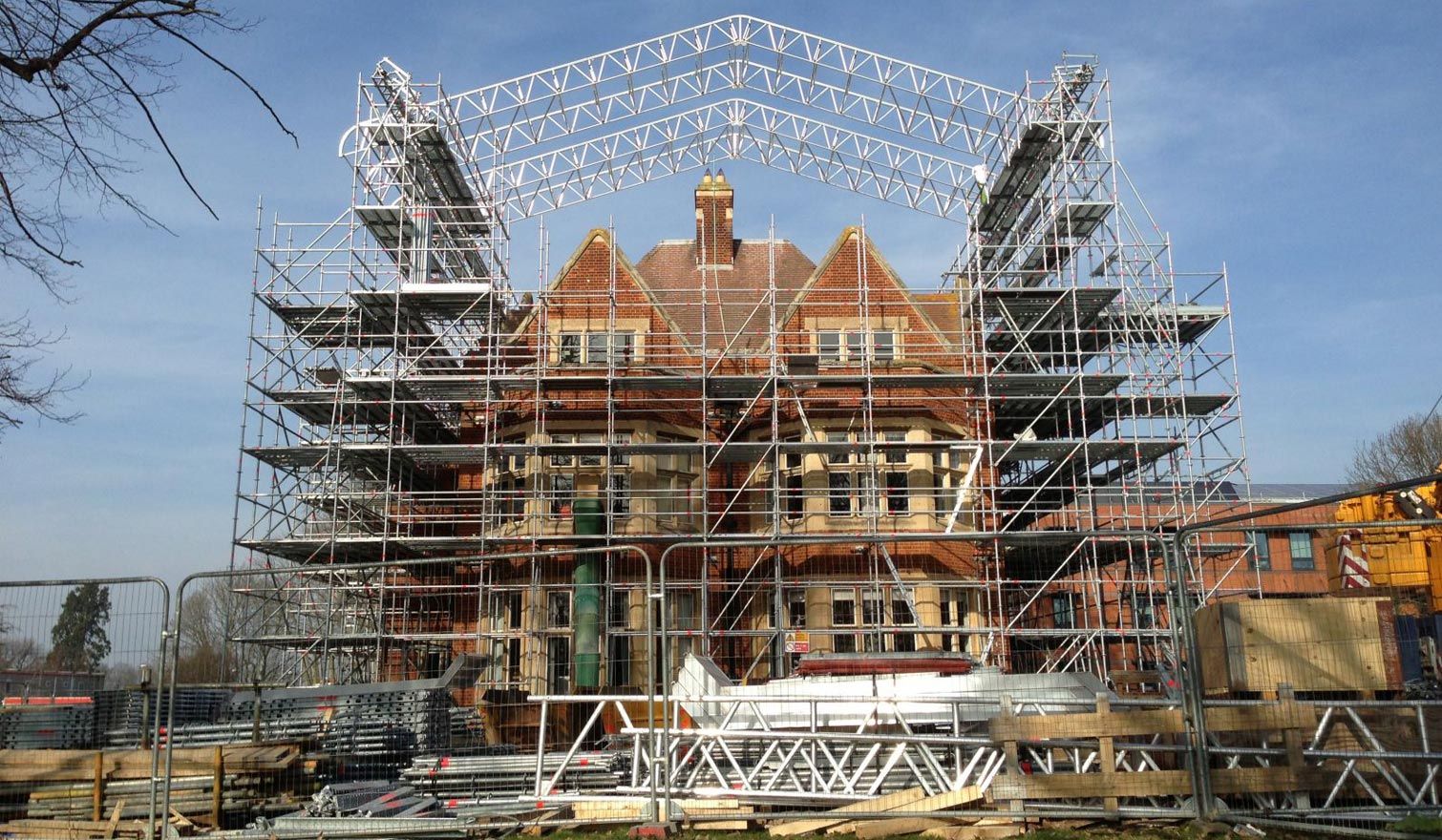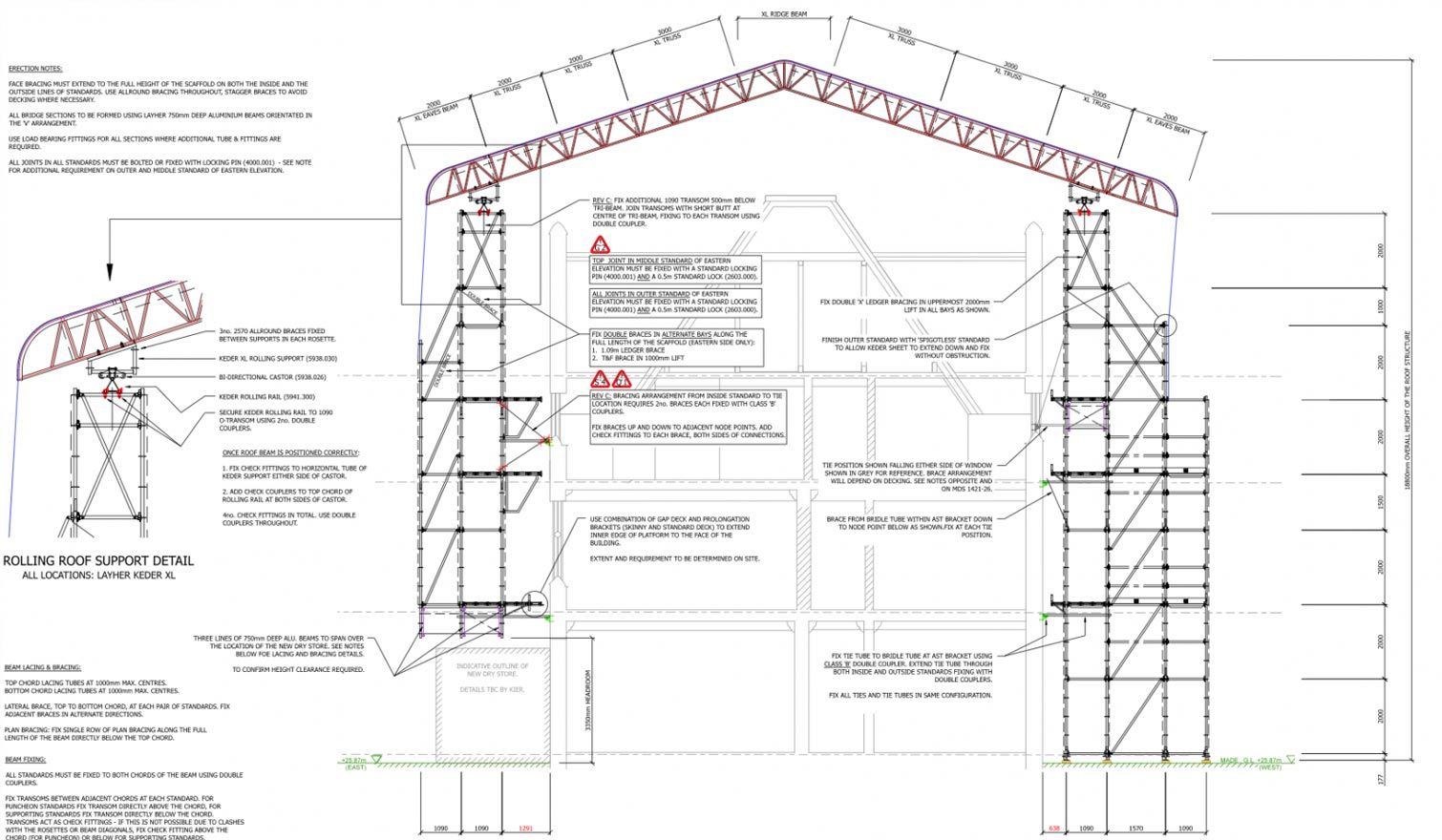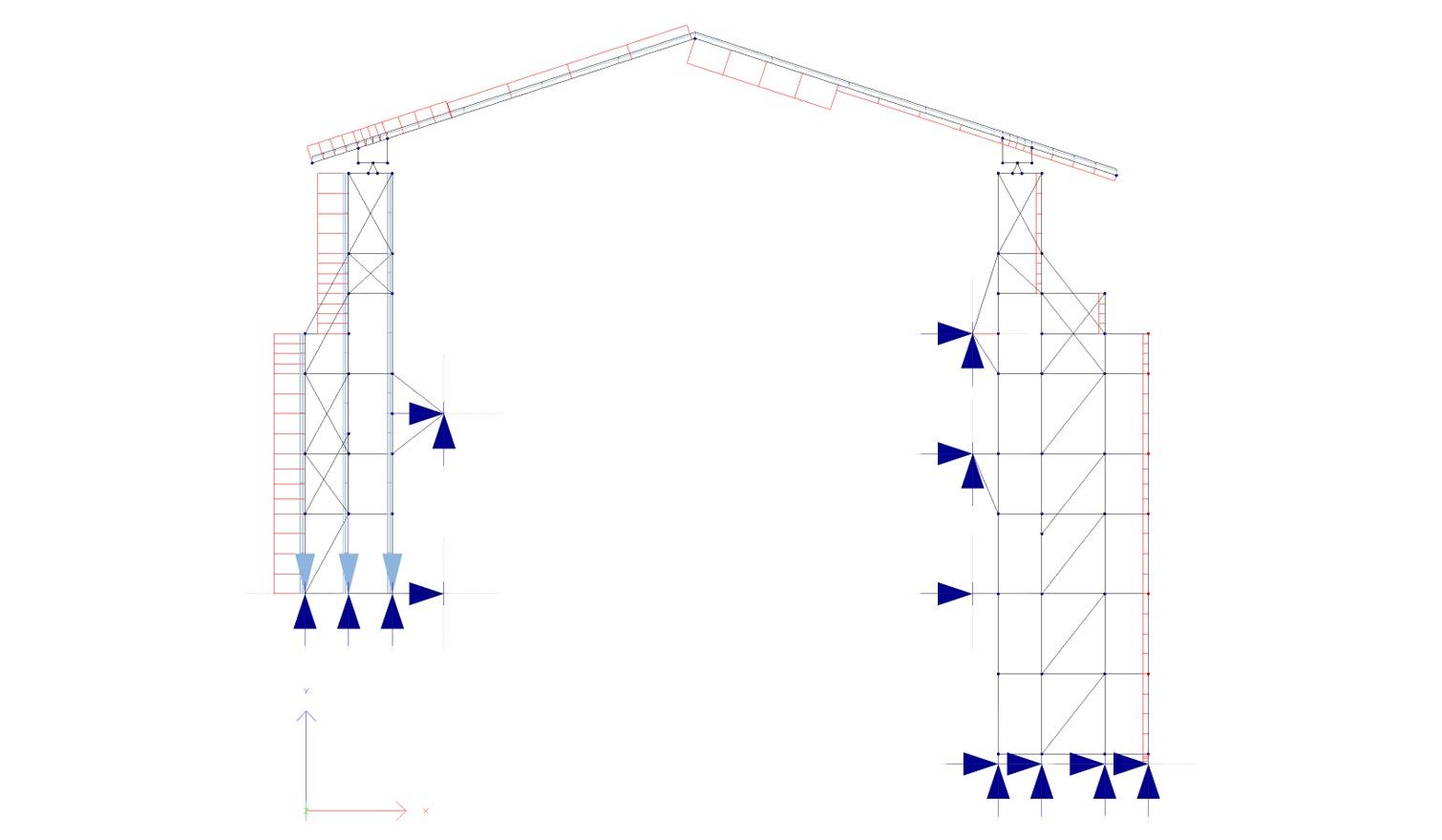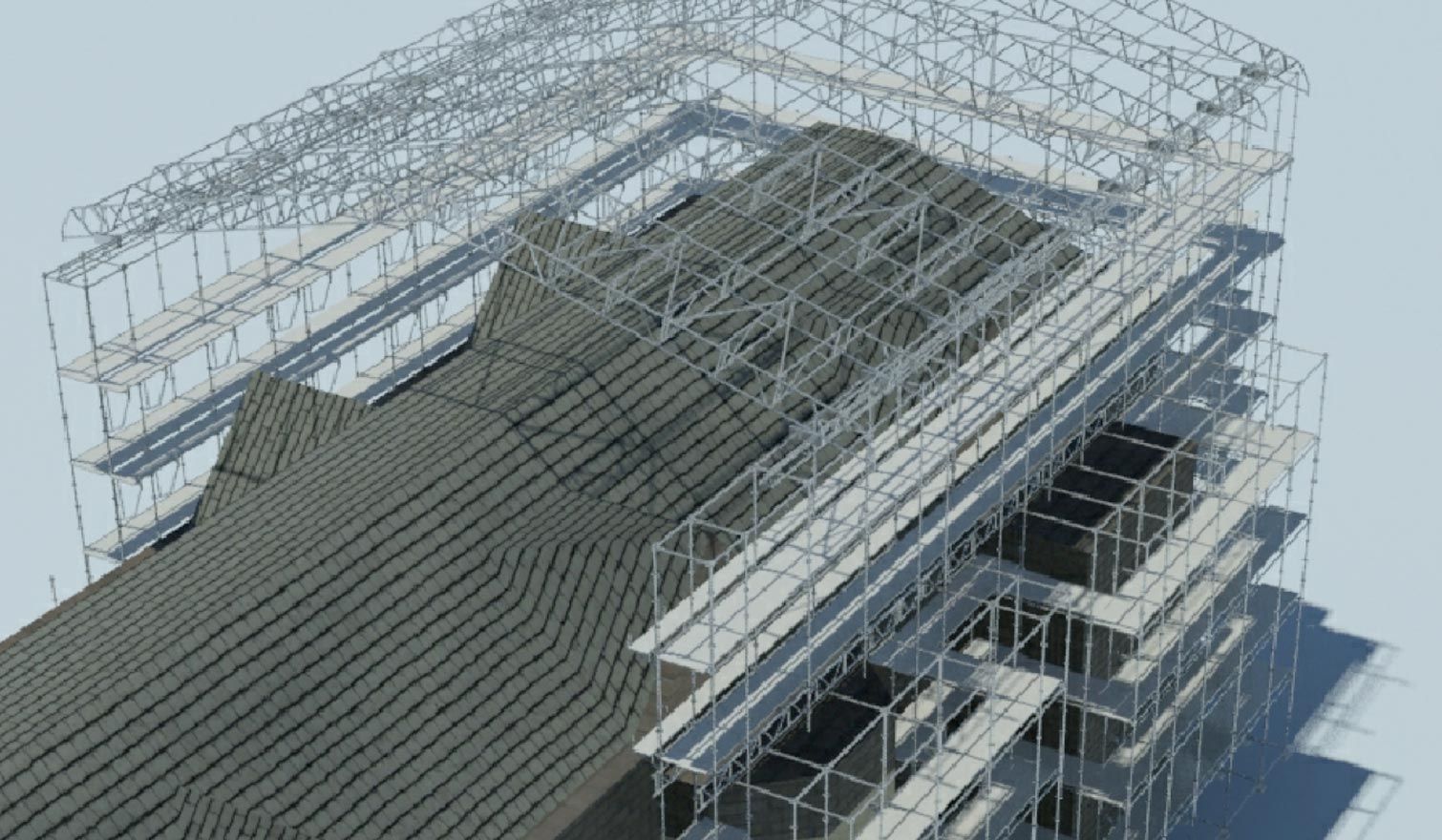Ready to start a project? Let's talk
Call us on 01737 244 047
Why do we need them?
Why do we need scaffold design calculations?
Design calculations are essential for all scaffold designs and, by extension, for ALL scaffolds.
This includes bespoke designs, as well as 'generic' standard solutions, such as those provided by the NASC TG20:13 e-guide (which are backed up by analysis).
The PURPOSE of scaffold design calculations (and therefore the REASON that they are required) is to substantiate the scaffold design drawings, i.e. to prove that they work! Without calculations a design is incomplete and cannot be used.
If any doubt remained as to the importance of scaffold design calculations, it should be dispelled by the legal requirement in the United Kingdom for 'strength and stability' calculations in the Work at Height Regulations 2005.
Work at Height Regulations - Requirements for scaffolding:
Strength and stability calculations for scaffolding shall be carried out unless —
- a note of the calculations, covering the structural arrangements contemplated, is available; or
- it is assembled in conformity with a generally recognised standard configuration.
(Working at Height Regulations 2005, Schedule 3 Part 2)
- "Substantiate (verb) : to establish by proof or competent evidence"
(Merriam-Webster dictionary)
- Absolute mathematical proof is typically not feasible in either a practical or an economical sense, due to the nature of temporary works and engineering in general.
- 'Competent evidence' is therefore the minimum standard required of any scaffold design calculations, in order to 'prove' the strength and stability of the designed scaffold structure.
What do scaffold design calculations have to include?
Exact calculation methods and design approaches can vary, but the basic requirement of any scaffold design calculation must include all of the following:
- An assessment of the loading conditions and combinations on the structure (dead, live, wind, snow load etc.).
- A check of the capacities of the scaffold components to sustain the loads and combinations of loads imposed upon them.
- An evaluation of the stability and the rigidity of the scaffold structure, ensuring that adequate factors of safety are maintained.
- Identification of loads imparted by the scaffold into foundations / adjacent structures. This is not strictly necessary to prove the adequacy of the scaffold itself, but since the integrity of the scaffold is generally reliant upon safe transmittal of such loads, calculation of them is necessary to allow the responsible parties to check the supporting / adjacent structures.
If required, 48.3 will check the ground conditions and design suitable footings and foundations, we will also check the permanent structure under the temporary load case induced by the scaffold.
Design Calculations by 48.3
- Clear, precise and accurate. Completed in accordance with current British and European Codes of Practice. The design calculations are cross-referenced to the design drawings and design risk assessment so that they can be easily followed and interpreted.
- Produced and presented electronically. Good presentation is important and key to good communication. It is clear that critical components, load combinations and load paths have been checked, without ambiguity or discrepancy. Our calculation package is regularly approved by clients and checkers with no requests for additional checks, information or re-analysis during the approval process.
- Where appropriate (for example temporary roof structures, as illustrated in the example project below) structural analysis software is used to assess the scaffold under applied load cases; this is either a 2D or 3D frame with characterised members, nodes and supports. Analysis software is never used in isolation – always as part of a wider calculation package.
A selection of the most common codes of practice we use to complete our designs are:
- BS 1139 Parts 1, 2, 4 and 6 Metal scaffolding
- BS 2482:2009 Specification for timber scaffold boards
- BS 5950-1:1990* Structural Steelwork
- BS 5973:1993* Access and working scaffolds and special scaffold structures in steel
- BS 5974:2017 Planning, designing setting up and use of temporary suspended access equipment
- BS 5975:2008+A1:2011 Code of practice for temporary works procedures and the permissible stress design of falsework
- NOTE: New version of this code is expected from BSI in February 2019.
- BS 6399: Pt 2: 1997* Code of practice for wind loads
- BS 6399: Pt 3: 1988* Loading for buildings - imposed roof loads (snow loading)
- BS 8118: Pt 1: 1991* Structural Use of Aluminium - Code of Practice for Design
- BS EN 12810-1:2003 Façade scaffolds made of prefabricated components - products specifications
- BS EN 12811-1:2003 Temporary works equipment: Scaffolds - Performance requirements and general design
- BS EN 12811-2:2004 Temporary works equipment. Information on materials.
- BS EN 12811-4:2013 Temporary works equipment. Protection fans for scaffolds. Performance requirements and product design.
- BS EN 13374:2013 Temporary Edge Protection Systems. Product Specification. Test methods
- BS EN 1991: Pt 1-4: 2005 Eurocode 1: Actions on structures - General Actions - Wind Actions
- BS EN 1991-2:2003 Eurocode 1: Actions on structures: Pt 2: Traffic loads on bridges
- BS EN 39:2001 Loose steel tubes for tube and coupler scaffolds - Technical delivery conditions
- BS EN 74 Parts 1, 2 and 3. Couplers, spigot pins and baseplates for use in falsework and scaffolds.
*Codes of practice have been withdrawn, however still occasionally used for reference.
We have left the full Eurocode series off this list for ease (and space!)
A selection of the industry guides we use to complete our scaffold designs are:
- HSG 33: 2012 Health & Safety in Roof Work (available for FREE on HSE website)
- TWf 2012:01 (Revised 2014) Hoardings - A guide to good practice
- SG28:17 Safe System of Work for Scaffolding associated with Timber Frame Building Construction
- SG4:15 The use of Fall Arrest Equipment Whilst Erecting, Altering & Dismantling Scaffolding
- TG4:17 Anchoring systems for scaffolding
- TG20:13 NASC Technical Guidance on the use of BS EN 12811-1
- TGN(E) 190: 2004 Design and use of temporary scaffold guards
Copies of National Access and Scaffolding Confederation (NASC) guidance documents are available FREE of charge from the NASC website.
The Temporary Works Forum (TWf) provides many excellent guides which are available FREE of charge from the TWf website.
Example Project
Tempsford Hall - Kier UK Headquarters
- Rolling (i.e. moveable) temporary roof on Layher Allround support & access scaffold.
- Original concept drawings developed into working scaffold design with the aid of frame analysis as part of design calculation package.
- Design package approved by Kier temporary works department without any requirement for additional or revised calculations.
- Scaffold successfully installed on site, and awarded an extremely rare 'Blue Flag' from Kier, resulting in visits / inspections from senior kier staff to view the scaffold as an example of good practice.
See our portfolio entry for further details on this project.




Design that uses the kit in your yard? No problem – let’s do it!
Call us on 01737 244 047